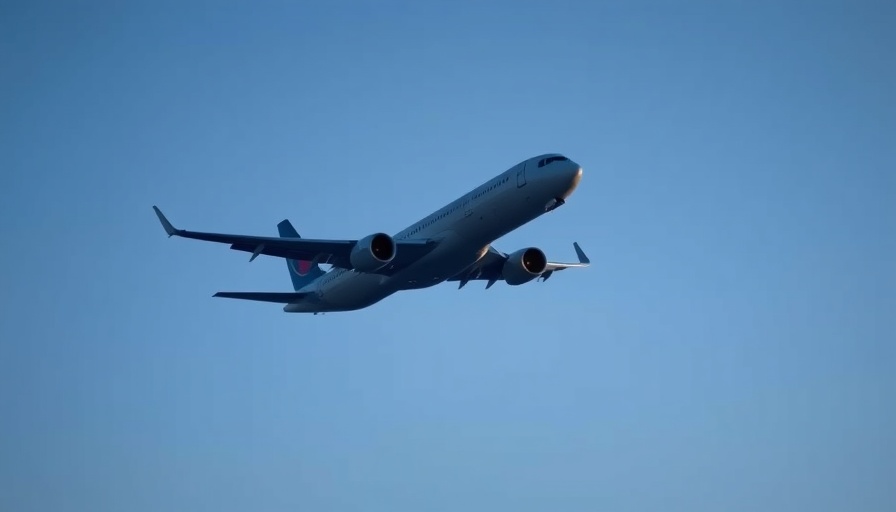
Remembering the Victims: A Call for Change in Aviation Safety
The tragic plane crash near Washington, D.C., earlier this year took the lives of four family members of Rachel Feres, sparking a significant movement for aviation safety reform. Feres expressed that this horrifying experience altered her perspective on flying forever, emphasizing that families like hers deserve better from regulators charged with maintaining aviation safety.
In the wake of this incident, which involved a collision between an Army Black Hawk helicopter and an American Eagle flight over the Potomac River, family members of victims have rallied together. They are currently advocating for legislative changes aimed at improving aviation safety standards, particularly amidst the troubling backdrop of a government shutdown that has exacerbated their concerns for timely oversight and governance.
The Legislative Push: Reform Efforts by Affected Families
During their time on Capitol Hill, Feres and other victims' families met with lawmakers, including Sen. Ted Cruz and Sen. Maria Cantwell, to discuss the importance of instituting reforms that ensure aviation safety is a nonpartisan priority. Feres poignantly stated, "Aviation safety reform matters. It matters to the American people." The collective voice of the victims' families attempts to bridge political divides, highlighting the universal right to safe air travel.
Sen. Cruz has proposed the "Rotorcraft Operations Transparency and Reform Act." This legislation would mandate all aircraft, military and civilian, to utilize crucial safety systems like the Automatic Dependent Surveillance–Broadcast (ADS–B). Under current conditions, the military can operate without this technology, a loophole that many believe contributed to the crash.
The Role of Systemic Failures in Aviation
The crash and ensuing investigations have raised significant questions about existing aviation regulations and the responsibility of the Federal Aviation Administration (FAA) to implement timely safety measures. A recent report indicated that air traffic controllers voiced concerns about existing risks, yet these warnings were often ignored by FAA management. As recent testimonies reveal, air traffic control dated back several years proposed changes to operations around Ronald Reagan Washington National Airport, which, if adhered to, might have mitigated the risks associated with heavy traffic in a complex airspace.
This systemic failure to proactively address safety disparities has ignited discussions not only within the families' advocacy group but also on legislative floors, addressing urgent lapses in regulatory compliance and protective measures. For instance, the FAA's recent permanent changes around restricted helicopter routes have come as a response to the tragic collision, demonstrating a need for reform rooted in both urgency and compassion.
Understanding the Broader Impact of Aviation Safety
The push for reform is not solely about the immediate aftermath of the crash; it's about ensuring a foundational understanding of the air traffic system's complexities and its implications for everyday travelers. Aviation safety transcends individual incidents; it reflects governmental responsibility and the public's trust in national institutions.
As lawmakers sense the heightened pressure from constituents mourning these losses, increased support for reforms can be anticipated. Weaving together the emotional narratives of families with concrete legislative actions lays the groundwork for more accountable governance in aviation safety.
Looking Ahead: Emerging Trends in Aviation Safety
While investigations continue into the specifics of the January collision, it is clear that the public is watching closely. The intersection of advocacy, technology, and legislative action will likely shape the future of air travel safety. Increased public awareness is bolstered by emotional appeals, particularly from those who tragically lost loved ones.
As technology advances and more safety measures are put in place, the potential for enhanced, more sophisticated air traffic management systems could reduce risks and build a safer flying experience. Those affected will aim to see these changes implemented swiftly, without the encumbrances of bureaucratic obstacles, allowing future generations to fly with peace of mind.
Conclusion: Why Your Voice Matters
In light of the heart-wrenching stories behind this tragic incident, it’s critical that everyone engages in conversations about the safety of our skies. As individuals, we can advocate for systemic changes within aviation, ensuring that our leaders are held accountable. Together, we can ensure that the safety of our aviation system becomes a priority in legislative discussions, demanding not just action but commitment to continual reform.
To join the conversation on aviation safety reform and provide your support, reach out to your local representatives and express your concerns. Together, let’s honor the memories of those lost by pushing for a safer future in air travel.
 Add Element
Add Element  Add Row
Add Row 



Write A Comment